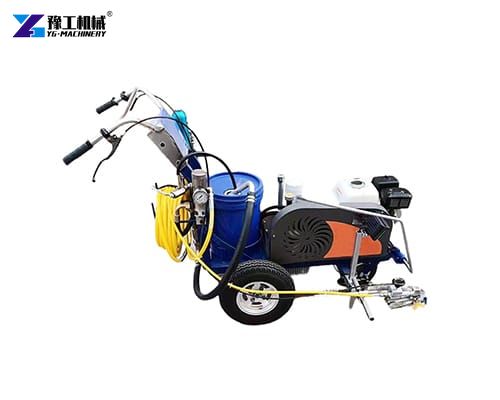In the realm of road infrastructure development and maintenance, efficient and precise road marking plays a critical role in ensuring traffic safety, guiding drivers, and enhancing overall road management. Among the various technologies available, the cold paint road marking machine has emerged as a popular choice for its versatility, cost-effectiveness, and environmental benefits.


Advantages of Cold Paint Road Marking Machine
1. Cost-Efficiency:
Lower Initial Investment: Cold paint machines are generally more affordable than thermoplastic applicators.
Reduced Operational Costs: No fuel is required for heating paint, and water-based paints are cheaper than thermoplastic materials.
Minimal Maintenance: Simpler mechanics mean lower repair and servicing expenses.
2. Environmental Friendliness:
Zero Emissions During Application: No fossil fuels are burned, reducing carbon footprint.
Low VOC Paint Options: Many modern cold paints are formulated with low volatile organic compounds (VOCs), complying with eco-friendly standards.
Recyclable Materials: Water-based paints are easier to dispose of safely.
3. Operational Flexibility:
Quick Setup and Cleanup: No heating equipment means faster mobilization and less downtime between jobs.
Versatile Applications: Suitable for small-scale projects (e.g., parking lots) and large highways alike.
Work in Diverse Conditions: Can operate in cooler temperatures where thermoplastic machines struggle.
4. Enhanced Safety and Durability:
Anti-Slip Properties: Some cold paints include aggregates like sand or glass beads for improved skid resistance.
Reflective Options: Paints with glass beads or reflective additives enhance nighttime visibility.
Long Lifespan: High-quality cold paints can last 12–24 months under normal traffic conditions.
Main Applications of Cold Paint Road Marking Machine
The adaptability of cold paint road marking machine makes them ideal for a wide range of road marking tasks:
1. Road Construction and Maintenance:
New road line installations.
Refreshing faded lines on existing roads.
Creating temporary markings during construction zones.
2. Parking Lots and Garages:
Marking parking spaces, directional arrows, and pedestrian crosswalks.
Applying disability parking symbols and fire lane markings.
3. Airports and Runways:
Painting taxiways, runway markings, and aircraft parking area
s.
Applying reflective markings for low-light visibility.
4. Sports Facilities:
Marking athletic tracks, basketball courts, and tennis courts.
Creating custom logos or branding on sports surfaces.
5. Industrial and Warehouse Zones:
Designating traffic lanes, loading bays, and safety zones.
Applying hazard warnings and directional signage.

